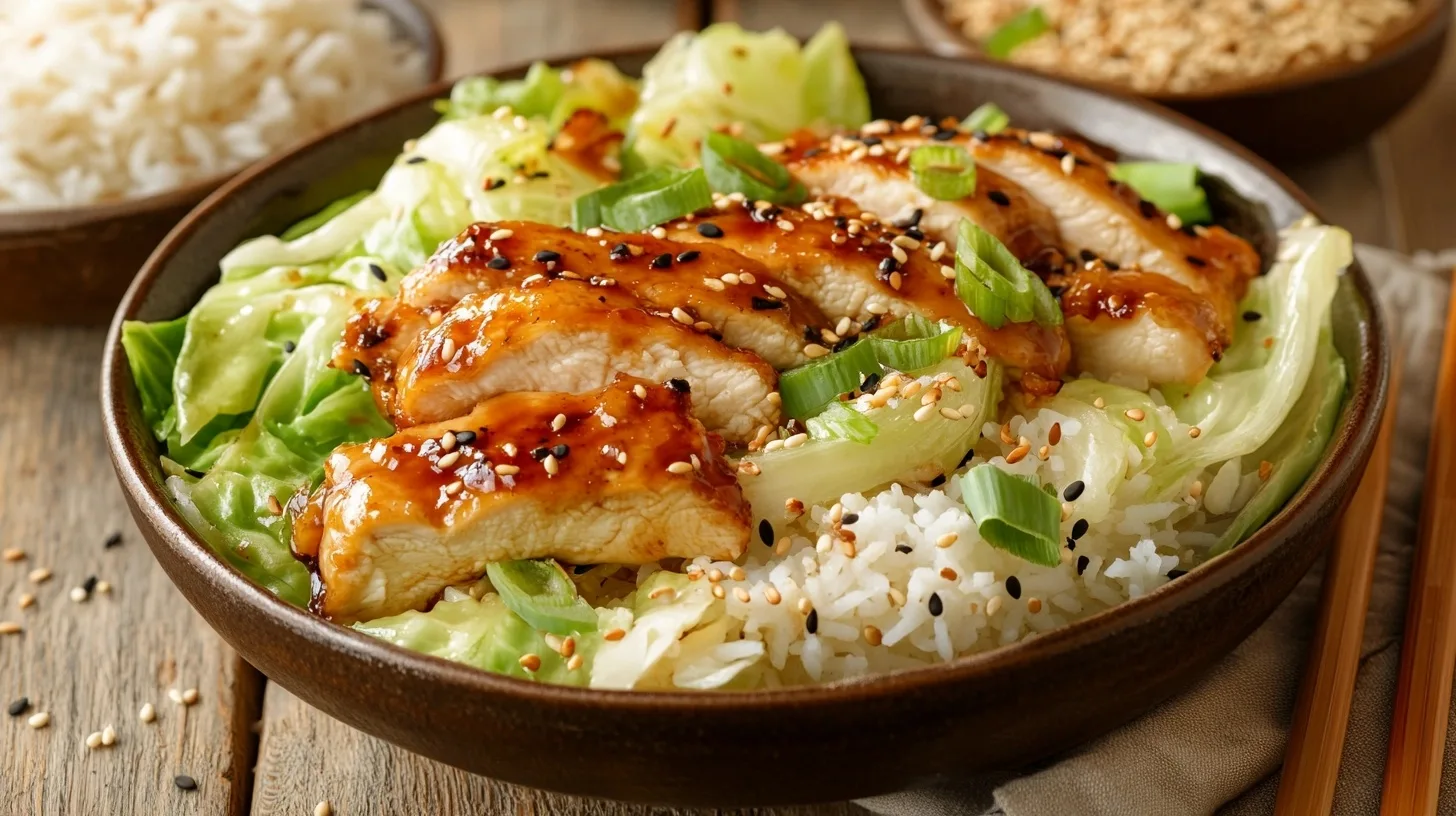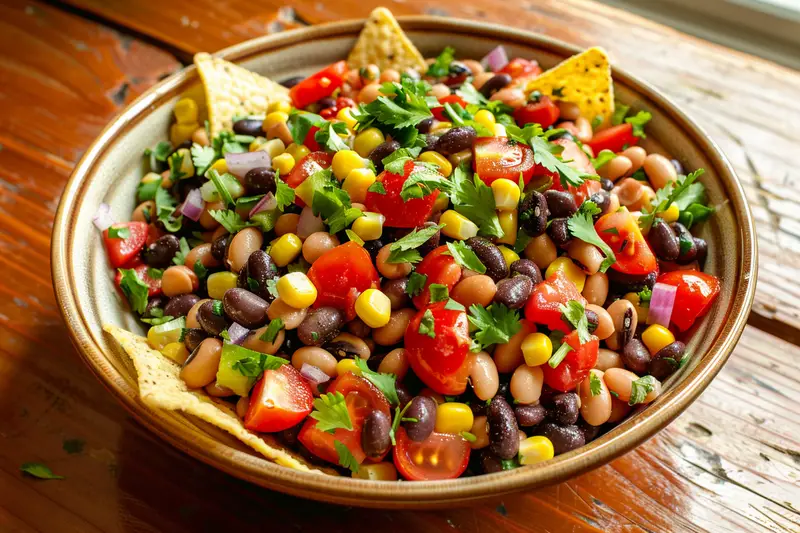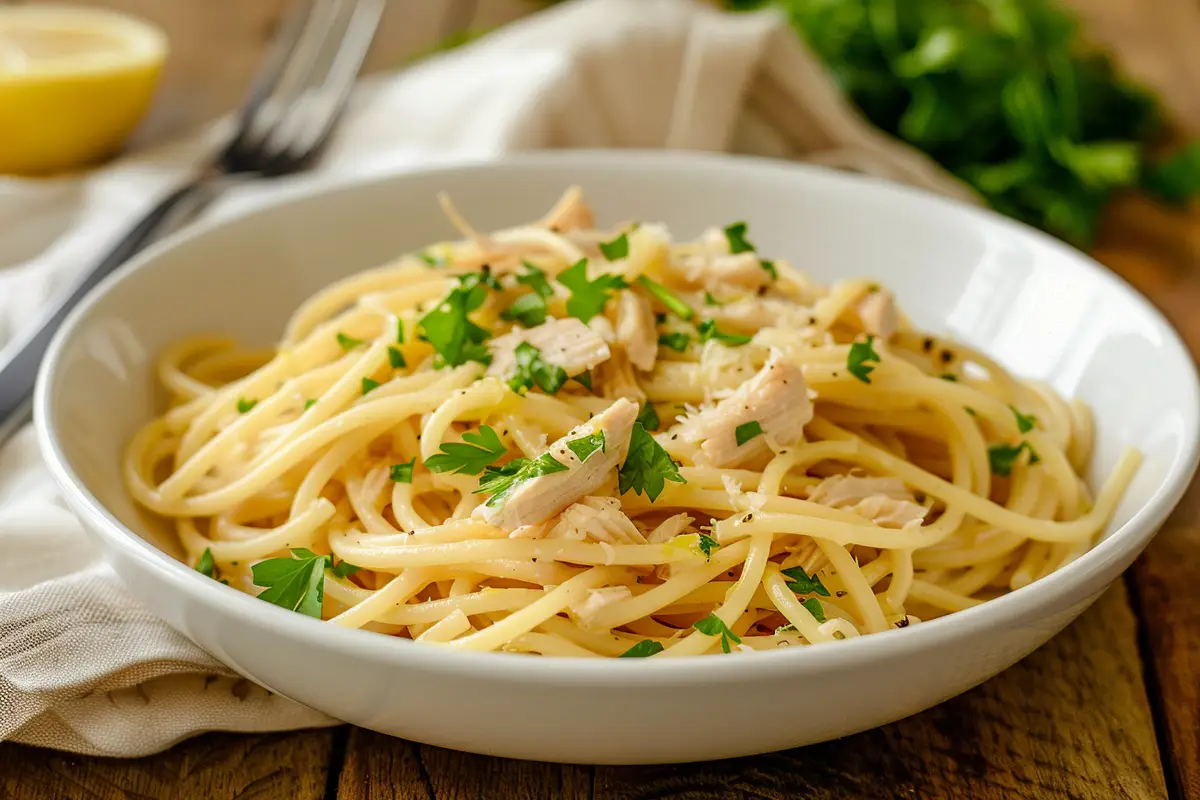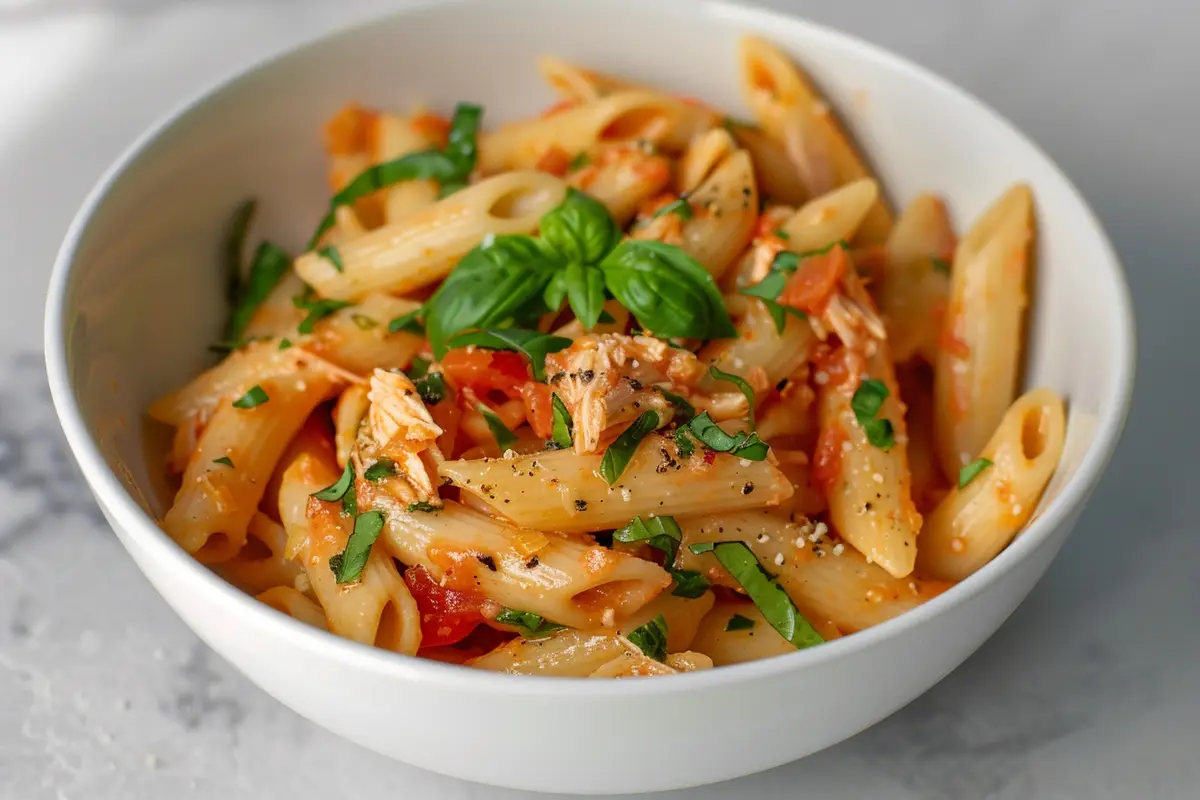The Hmong cabbage and chicken recipe is a flavorful and healthy stir-fry that perfectly showcases the simplicity and depth of Hmong cuisine. This chicken cabbage stir fry recipe combines tender chicken, crisp cabbage, aromatic ginger, and traditional seasonings like soy and fish sauce to create a meal that is as comforting as it is vibrant. In this article, we’ll dive deep into the history, preparation, and secrets behind crafting the ultimate Hmong cabbage and chicken stir-fry recipe.
Table of contents
Why Read This Guide?
If you’re intrigued by Hmong culinary traditions or looking for a new, healthy chicken cabbage stir-fry recipe, this guide is your perfect resource. You’ll learn how to recreate the authentic flavors of Hmong culture in your kitchen and explore the versatility of ingredients like napa cabbage and spice. Plus, this recipe offers practical tips for achieving that perfect balance of taste and texture.
What Is Cabbage and Chicken in Hmong Cuisine?
The Hmong cabbage and chicken dish is a staple in traditional Hmong cooking. The pairing of chicken and cabbage is celebrated for its versatility and ease of preparation, making it a favorite across Hmong families. Variations of this dish exist, from Chinese cabbage stir-fries to versions that include noodles or rice.
- Cabbage and chicken symbolize simplicity in Hmong culture, where meals often focus on fresh, locally sourced ingredients.
- Variations of this dish exist, from napa cabbage stir-fries to versions that include Pasta or rice.
Why This Dish Matters:
The Hmong cabbage and chicken recipe represents the adaptability and creativity of Hmong culinary traditions, making it a beloved choice for families.
The Significance of Cabbage in Hmong Cooking
Cabbage is a versatile vegetable that holds a special place in Hmong food. The chicken and cabbage stir fry showcases how this humble ingredient can transform into a flavorful and satisfying meal. Whether using napa cabbage, green cabbage, or even red cabbage, this vegetable is ideal for creating a quick, nutritious meal.
- Its mild flavor pairs well with savory seasonings like soy sauce and complements the tender texture of chicken.
- Whether using celery cabbage, savoy cabbage, or even red cabbage, this vegetable is perfect for creating a quick, nutritious meal.
Cabbage Varieties in Hmong Cuisine
| Type of Cabbage | Flavor Profile | Best Use in Stir-Fry |
|---|---|---|
| Peking cabbage | Sweet, Mild | Soft texture, ideal for soaking up sauces. |
| Green Cabbage | Crisp, Earthy | Adds crunch to the dish. |
| Red Cabbage | Slightly Peppery | Provides a vibrant color contrast. |
Chinese cabbage is often the preferred choice for this recipe due to its tender texture and ability to absorb flavors.
Understanding the Hmong Cabbage and Chicken
The essence of this recipe lies in its balance of flavors and textures.
- Key Ingredients:
- Tender chicken pieces (often chicken thighs or chicken breast).
- Thinly sliced cabbage (napa cabbage is most common).
- Aromatics like ginger and green onions.
- Seasonings like soy sauce and fish sauce.
- Cooking Method:
- Sear the chicken for a golden, savory base.
- Add the cabbage and cook until it’s tender yet crisp.
- Stir well with the sauce mixture to coat every bite.
Step-by-Step Guide to Making the Perfect Stir-Fry
Ingredients:
- Chicken: 1 pound (chicken thighs or breast, cut into thin strips).
- Cabbage: 2 cups (celery cabbage, shredded).
- Aromatics: 2 tablespoons grated spice, 2 cloves garlic.
- Seasonings: 2 tablespoons soy sauce, 1 tablespoon fish sauce.
- Optional Additions: Noodles or steamed rice.
Instructions:
- Marinate the Chicken: Combine the chicken with soy sauce, a pinch of sugar, and grated zest. Let it sit for 15 minutes.
- Cook the Chicken: Heat oil in a wok, sear the chicken until golden brown, and set it aside.
- Cook the Cabbage: Add the cabbage and garlic to the same wok. Stir fry for 2–3 minutes until the cabbage is tender.
- Combine: Add the chicken back to the wok, pour in the fish sauce, and stir well.
- Serve: Pair with rice or Pasta for a complete meal.
Hmong Cuisine Across Communities
Across various regions, Hmong families adapt this dish using local ingredients while preserving its core elements.
- Families may use regular green cabbage or even bok choy in areas with limited access to peking cabbage.
- The dish often includes additional vegetables like carrots or bell peppers, showcasing the adaptability of Hmong cooking.
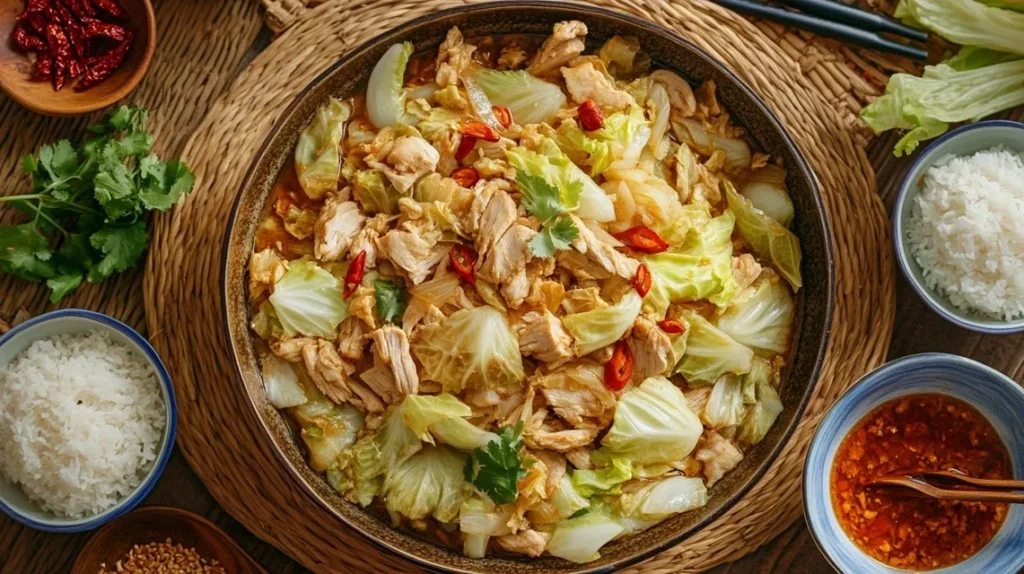
Why Napa Cabbage Is Key
Wong bok is the heart of an authentic Hmong cabbage chicken recipe. It’s a natural sweetness, and tender leaves perfectly complement the savory chicken.
- When cooked, Chinese cabbage becomes soft yet retains a slight crunch, adding texture to the dish.
- It’s also rich in nutrients, making this a healthy option for everyday meals.
The Role of Ginger in Enhancing Flavor
Ginger is an essential component of this recipe, bringing a warm, slightly spicy kick.
- Health Benefits: Ginger aids digestion and has anti-inflammatory properties, making it a popular ingredient in Hmong cuisine.
- Flavor Boost: Grated spice infuses the dish with a fresh, aromatic undertone that ties the other flavors together.
Ginger’s role in this recipe is similar to how it enhances dishes like Mississippi Chicken, bringing warmth and depth to the overall flavor.
Note: Garlic and similar Allium species have long been recognized for their cardiovascular benefits, as highlighted in this review discussing their potential impact on health and disease prevention.
Best Cabbage Varieties for This Dish
To achieve the best results, choose a cabbage variety that suits your taste preferences.
- For Softness: Wong Bok absorbs the sauce and pairs well with tender chicken.
- For Crunch: Green cabbage retains a firmer texture, ideal for those who prefer a crisp bite.
Tips for an Authentic Hmong Cabbage Chicken Recipe
To capture the essence of Hmong food, follow these tips:
- Use Fresh Ingredients: Fresh vegetables and high-quality chicken are key to achieving bold flavors.
- Balance the Seasonings: Adjust the soy and fish sauce to suit your taste while balancing savory and sweet.
- Don’t Overcook: Ensure the cabbage remains slightly crisp for the perfect texture.
For a quick and flavorful side, pair your stir-fry with Mini Loaded Baked Potatoes to complement the dish’s bold flavors.
How to Serve the Dish for a Taste of Hmong Culture
Presentation matters in Hmong culinary traditions. Serve the dish with steamed rice or noodles garnished with freshly chopped green onions.
Summary of Key Points
- The Hmong cabbage and chicken recipe is a simple yet flavorful dish that highlights the richness of the Hmong dish.
- Napa cabbage and zest are essential for authentic taste and texture.
- Marinating the chicken enhances its tenderness and flavor.
- This recipe is versatile, allowing for variations across different communities.
- Serve with rice or noodles to complete the meal.
Deep Dive Into the Hmong Cabbage and Chicken Recipe
Building on the basics, we’ll now delve deeper into the finer details of the Hmong cabbage and chicken recipe. From the history behind the dish to its nutritional benefits and cooking techniques, this section provides an in-depth look at what makes this stir fry so special.
Exploring the Cultural Significance of Hmong Cuisine
The Rich Heritage of Hmong Cooking
Hmong culinary traditions blend simple, hearty flavors rooted in tradition. Meals like cabbage and chicken stir fry reflect the Hmong people’s resourcefulness and connection to the land.
Much like how this dish showcases cultural traditions, other recipes like Cheesy Garlic Chicken Wraps also highlight the beauty of blending simple, fresh ingredients.
- Farm-to-Table Philosophy: Most ingredients in Hmong cooking come from home gardens or local farms, ensuring freshness.
- Flavor Profiles: The cuisine emphasizes balance, using aromatics like ginger, fresh herbs, and a mix of savory and sweet seasonings.
How This Recipe Captures the Essence of Hmong Cooking
The Hmong cabbage chicken recipe captures the essence of Hmong cooking heritage by:
- Highlighting simple ingredients like cabbage and chicken.
- Relying on versatile, time-tested cooking methods like stir-frying.
- Balancing bold seasonings with the natural sweetness of napa cabbage.
The Role of Soy Sauce and Fish Sauce in the Recipe
Soy Sauce: A Must-Have Ingredient
Soy sauce is central to the recipe, providing:
- Savory Depth: Its umami flavor enhances the chicken and complements the cabbage.
- Versatility: Works as both a marinade and a finishing touch.
Fish Sauce: The Secret to Authenticity
While less commonly used in Western cooking, fish sauce is a cornerstone of Hmong gastronomic customs:
- Flavor Boost: Adds a subtle brininess that enhances the other ingredients.
- Authenticity: Its inclusion ties the dish to its Southeast Asian roots.
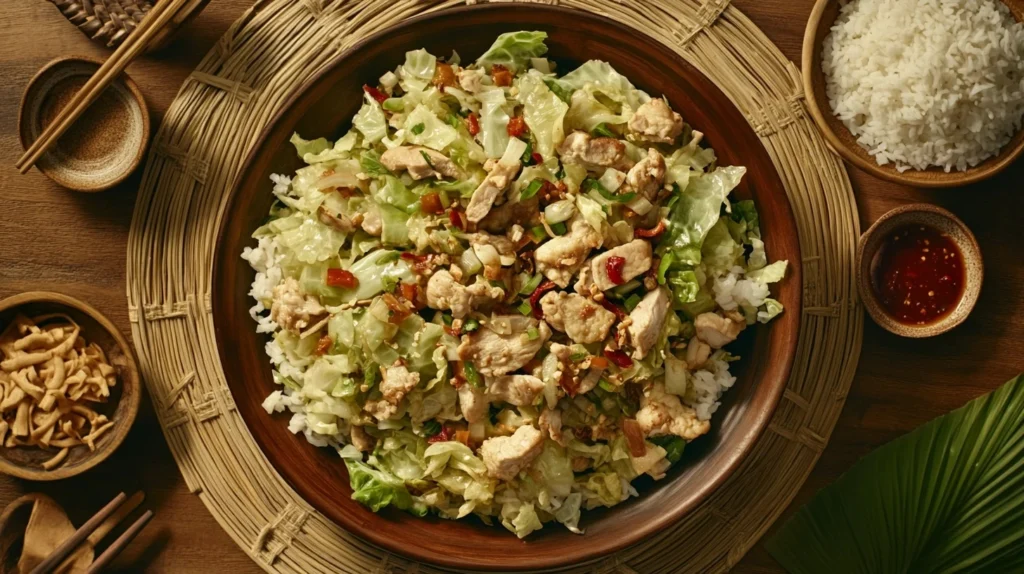
Best Practices for Marinating and Cooking Chicken
Marinate the Chicken for Maximum Flavor
Marinating is a critical step that infuses the chicken with layers of flavor. For this recipe:
- Ingredients for the Marinade:
- 2 tablespoons soy sauce.
- 1 teaspoon grated ginger.
- A pinch of sugar.
- Duration: Let the chicken marinate for at least 15–20 minutes to ensure it absorbs the seasoning.
Cooking Techniques for Perfect Chicken
- Searing the Chicken: Use high heat to lock in the juices and create a golden crust.
- Ensuring Tenderness: Avoid overcooking by removing the chicken from the pan once it’s just done.
How to Properly Prepare Cabbage for Stir Fry
Choosing the Right Cabbage
While wong bok is ideal, other options like savoy cabbage or even Chinese cabbage can work.
- Freshness Test: Choose cabbages with firm heads and bright, unblemished leaves.
Cutting the Cabbage
- Slice the napa cabbage into thin strips for even cooking.
- Rinse thoroughly to remove any dirt or grit trapped in the leaves.
Why Ginger Is Indispensable
Seasoning isn’t just a flavor enhancer—it’s a key element that ties the dish together.
How to Use Seasoning
- Grate or finely chop fresh spice for maximum aroma.
- Add it early in the cooking process to release its oils and flavor.
Nutritional Benefits of Ginger
Ginger is rich in antioxidants and has natural anti-inflammatory properties, making this dish delicious and healthful.
Adding Vermicelli for a Versatile Variation
Adding noodles transforms the dish into a hearty, one-pan meal.
Fettuccine Options
| Noodle Type | Texture | Best For |
|---|---|---|
| Rice Spaghettis | Light and Chewy | Absorbs the sauce well. |
| Egg Spaghettis | Soft and Springy | Adds richness to the dish. |
| Glass Spaghettis | Transparent and Slippery | Offers a unique texture. |
How to Incorporate Noodles
- Cook the Pasta separately until al dente.
- Add them to the wok during the final step, stirring well to coat them in the sauce.
Making It a Complete Meal
The Hmong cabbage and chicken stir fry pairs beautifully with sides or additional toppings.
Suggested Pairings
- Rice: Steamed jasmine rice balances the bold flavors.
- Vegetables: Add sliced carrots, bell peppers, or snap peas for more variety.
Best Cabbage Varieties for Specific Flavors
Each cabbage variety offers a unique twist to the dish:
- Napa Cabbage: Sweet and tender, perfect for absorbing sauces.
- Green Cabbage: Crisp and slightly peppery, adds texture.
- Red Cabbage: Vibrant and mildly sweet, ideal for presentation.
How to Maintain Authenticity While Adapting the Recipe
If you’re unable to find traditional ingredients like Peking cabbage or fish sauce, here’s how you can adapt without losing the authenticity:
- Substitutes for Napa Cabbage: Bok choy or regular cabbage.
- Fish Sauce Alternative: Use a blend of soy sauce and Worcestershire sauce for a similar flavor.
Serving Suggestions for Maximum Enjoyment
Presentation Tips
- Serve the stir-fry in a large, shallow dish to showcase its vibrant colors.
- Garnish with chopped green onions or sesame seeds for added flavor.
When to Serve This Dish
This recipe is perfect for:
- Weeknight Dinners: Quick and easy to prepare.
- Family Gatherings: A dish that’s sure to please a crowd.
For a complete meal, consider pairing this stir-fry with a bowl of Spicy Chicken Soup, which offers a warming contrast to the dish.
Closing Thoughts on the Hmong Cabbage and Chicken Recipe
The Hmong cabbage and chicken stir fry recipe is more than just a meal—it’s a window into the rich traditions of Hmong food. Its balance of flavors, ease of preparation, and adaptability make it a must-try for anyone seeking to explore new culinary horizons.
Bullet Point Recap:
- Use napa cabbage for its tender texture and ability to absorb flavors.
- Marinate the chicken to ensure maximum flavor and tenderness.
- Incorporate zest for its bold, aromatic profile.
- Adapt the recipe with different vegetables or Pasta to suit your preferences.
- Pair with rice or noodles for a complete, satisfying meal.
Enhancing Your Hmong Cabbage and Chicken Experience
In this final section, we’ll explore ways to elevate your Hmong cabbage and chicken recipe, from creative variations to expert tips for perfecting the dish. Whether you’re cooking for the first time or refining your technique, these insights will help you master the art of Hmong dishes.
Creative Variations for Every Occasion
Vegetarian and Vegan Options
Transform the recipe by swapping chicken with plant-based alternatives.
- Tofu: Use firm tofu, cubed and pan-fried, for a protein-packed alternative.
- Mushrooms: Shiitake or oyster mushrooms mimic the umami flavor of chicken.
Spicy Kick
Add heat to your dish with:
- Fresh chili slices or chili paste for a fiery flavor.
- Crushed red pepper flakes are sprinkled during the final stir.
For a unique twist, try incorporating flavors inspired by Delicious Churu Chicken Amarillo, blending spice and sweetness.
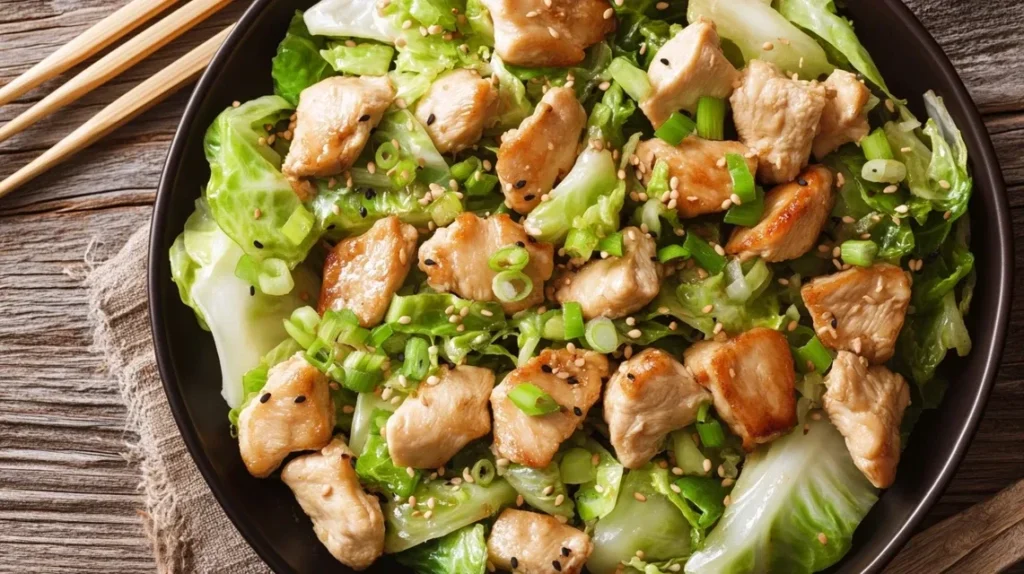
Secrets to a Perfect Stir Fry
The Right Tools
- Wok or Large Skillet: Ensures even cooking and prevents overcrowding.
- High Heat: Key for achieving a quick sear and preserving the crunch of the cabbage.
Timing Is Everything
- Cook the chicken first, then set it aside to avoid overcooking.
- Add wong bok last to maintain its tenderness and slight crispness.
Beyond the Basics: Additional Flavor Enhancers
Aromatics
- Sauté garlic and onions along with zingiber for a richer flavor base.
Extra Toppings
- Sprinkle roasted peanuts or sesame seeds for a nutty crunch.
- Garnish with cilantro for a fresh, herbal finish.
Serving Ideas for a Memorable Meal
Side Dishes
- Spring Rolls: Pair the stir fry with crispy rolls for texture contrast.
- Soup: A light broth like miso or chicken soup complements the dish.
Drinks
- Serve with green tea or a refreshing cucumber-infused water to cleanse the palate.
Final Tips for Success
- Ingredient Prep: Cut all ingredients before starting to ensure smooth cooking.
- Balance Flavors: Taste the dish as you go and adjust the soy sauce and fish sauce as needed.
- Storage: Refrigerate leftovers in an airtight container for up to three days.
Bullet Point Recap:
- Explore vegetarian options like tofu or mushrooms.
- Use high heat and a wok for authentic stir fry results.
- Enhance with garnishes like peanuts, sesame seeds, or cilantro.
- Pair with sides like spring rolls or soup for a complete meal.
- Adjust seasoning to achieve the perfect balance of flavors.
With these insights, your Hmong cabbage and chicken dish will be delicious and tailored to your personal taste and creativity. Enjoy this flavorful journey into Hmong cooking heritage!
FAQs
What makes this dish unique in Hmong cuisine?
Its simplicity and adaptability make it a staple in many Hmong families.
Can I use other types of cabbage?
Yes, green cabbage or bok choy work well as substitutes.
What type of chicken is best?
Chicken thighs are preferred for their juiciness, but chicken breast is also a great option.
Is this recipe spicy?
No, but you can add chili flakes for heat.
What’s the best way to store leftovers?
Store in an airtight container in the fridge for up to 3 days.
Can I make this dish vegetarian?
Substitute chicken with tofu or mushrooms.
What side dishes pair well with this recipe?
Steamed rice, egg rolls, or a fresh vegetable salad are excellent choices.
How long does it take to cook?
The entire dish can be prepared in under 30 minutes.
What’s the nutritional value of this dish?
It’s high in protein, low in fat, and packed with vitamins from the cabbage and seasoning.
Conclusion: Celebrating the Hmong People and Their Culinary Traditions
The Hmong people have a deep-rooted connection to their food, with recipes passed down through generations that reflect their unique cultural identity. This delicious Hmong cabbage recipe is a testament to their culinary creativity, combining simple, wholesome ingredients with bold, vibrant flavors. By learning how to make this dish, you’re not just enjoying a meal—you’re experiencing the traditions of the Hmong people through their food.
Whether you’re trying out a healthy chicken cabbage stir fry for a weeknight dinner or exploring cabbage stir fry with noodles for a hearty meal, this recipe invites you to embrace the beauty of Hmong cuisine.
Tips for Preparing the Perfect Chicken and Cabbage Stir Fry
- Cut the Chicken for Even Cooking
To ensure tender, juicy bites, always cut the chicken into small, even pieces. If using skin-on chicken thighs, trim excess fat and slice them into strips for easier cooking. - Place the Chicken First
Always place the chicken in the hot wok before adding the vegetables. This technique allows the meat to develop a golden, caramelized crust while sealing in its juices. - Add Chicken Back Last
After cooking the cabbage, always add the chicken back into the pan in the final step. This ensures the chicken stays tender and juicy while absorbing the flavors of the stir fry.
Simple Variations to Try
- Cabbage Stir Fry with Noodles
Add pre-cooked noodles during the final step for a satisfying one-pan meal. The combination of chicken, cabbage, and noodles is perfect for those who enjoy heartier dishes. - Simple Chicken Cabbage Stir Fry
For a lighter meal, skip the noodles and serve the dish over steamed rice. This keeps the focus on the healthy chicken cabbage stir fry. - Creative Ingredients
Experiment with other vegetables like carrots or bell peppers to add color and nutrition to your chicken and cabbage recipes.

